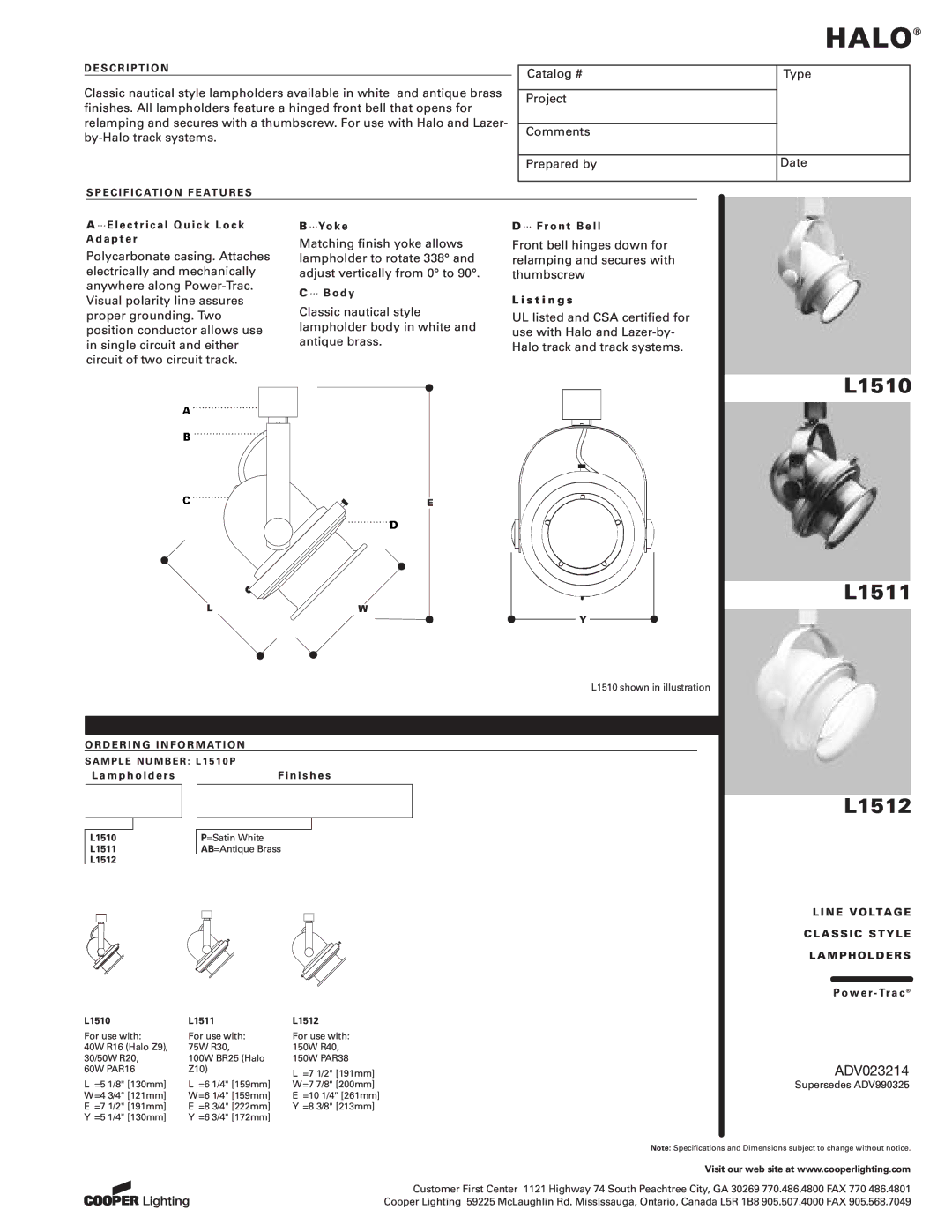L1511, L1510, L1512 specifications
Cooper Lighting has established itself as a leader in the lighting industry, providing innovative solutions tailored to various applications. Among its extensive portfolio, the L1512, L1510, and L1511 models stand out due to their advanced features, impressive technologies, and notable characteristics.The L1512 model is renowned for its versatility and reliability. It is designed to meet the needs of various commercial applications, including retail and hospitality environments. One of its prominent features is the adjustable lumen output, allowing users to customize the brightness according to specific requirements. This adaptability makes it suitable for different ambiance settings, making it perfect for dynamic spaces. The L1512 also incorporates advanced LED technology, which not only enhances energy efficiency but also extends the product lifespan, thereby reducing maintenance costs over time.
On the other hand, the L1510 model focuses on delivering high-quality illumination while maintaining an aesthetically pleasing design. It includes features such as a sleek profile and multiple mounting options, making it easy to integrate into various architectural designs. Furthermore, it utilizes smart lighting technologies that enable integration with building management systems or control platforms, making it an excellent choice for modern smart buildings. The L1510's high color rendering index (CRI) ensures that colors appear vibrant and true to life, which is essential in environments like art galleries or showrooms.
The L1511 model is specifically engineered for industrial settings, offering robust performance under demanding conditions. One of its standout characteristics is its durability, designed to withstand harsh environments while maintaining effective lighting. The L1511 also incorporates technology for enhanced thermal management, ensuring that the fixture operates efficiently without overheating. This model is equipped with intelligent controls that allow for motion detection and daylight harvesting, significantly contributing to energy savings.
In summary, Cooper Lighting’s L1512, L1510, and L1511 models exemplify innovation in lighting technology. Each model possesses unique features tailored to meet specific application needs. Whether it’s the versatility of the L1512, the aesthetic appeal of the L1510, or the ruggedness of the L1511, these fixtures reflect Cooper Lighting’s commitment to excellence and sustainability in the lighting sector. With their energy-efficient designs, advanced technologies, and adaptability, these models set a benchmark for contemporary lighting solutions.

